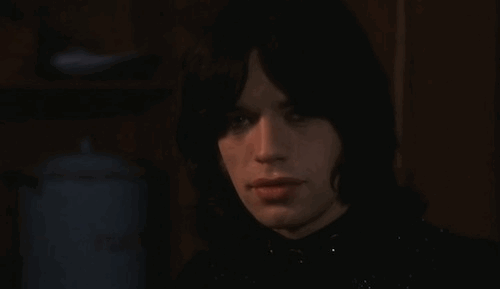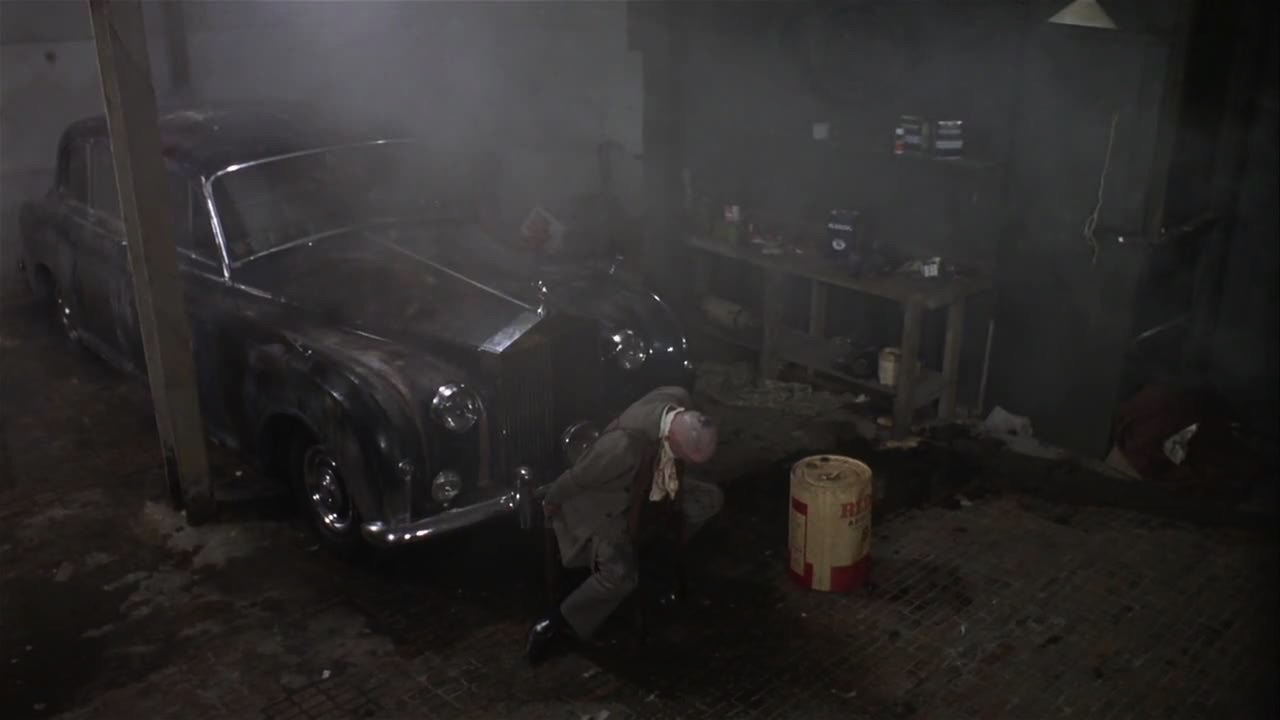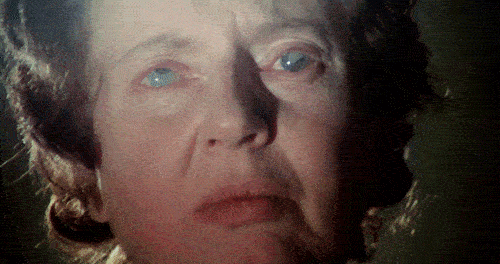Donald Cammell & Nicolas Roeg
If forced to choose a single work that captures 1960’s Swinging London in all its psychedelic glory it would be hard to best “Performance” (1970), the dark, hallucinatory mash-up sans pareil whose influence in cinema and pop culture remains deep and wide. Completed in 1968 then shelved for two years by Warner Bros because it was deemed unwatchable, the film boasted sex, drugs and rock & roll a plenty. And real-life gangsters and ultra violence. And a 25-year old Mick Jagger.
““I’ll tell you this: the only performance that makes it, that really makes it, that makes it all the way, is the one that achieves madness. Right? Am I right? You with me?.””
The story itself is classic noir; a gangland enforcer crosses his boss one time too many and goes to ground, hiding out in the basement sublet of a mysterious mansion. There he meets his eccentric landlord and engages in a psychological game of cat and mouse. It could be the plot from a 1940’s B-movie. But in the hands of the first-time co-directors Donald Cammell and Nicolas Roeg what we get is something altogether different: a hallucinatory version of “Through The Looking Glass” with our protagonist blasted from one world to the next by psychedelic mushrooms.
““He’s a nut case, like all artists. But, I can rely on him.””
Unfolding in two distinct parts and set in two very different worlds, the first 30 minutes is spent in the company of Chas Devlin (James Fox), a suave enforcer for a South London crew. Fastidious and cruel, a macho narcissist who enjoys his work with sadistic glee, Chas is a real performer. We also see him at play, a dandy living his fantasy in an obsessively neat bachelor pad, the camera luxuriating in his immaculate wardrobe, accessories and physique with fetishistic delight. Chas is a lethal shark in mod clothing, his camelhair coat casually knotted as he dispenses violence with sneering brutality. Fox, known for playing gentlemen, was cast against type and delivers one of the most iconic performances in British cinema. Nuanced and complex, he is utterly believable in his strutting menace.
““Nothing is true, everything is permitted”.”
After his shocking fall from grace, Act Two opens as Chas lands in the home of Turner (Mick Jagger), a reclusive, retired rock star living in a narcotic, patchouli-scented ménage-a-trois. Jagger, then the biggest star in the world, was never a great actor, but here he is quite perfect in a role made for him, literally. The small, beautiful androgynous ruler of his libertine realm, Turner is bored, petulant and very sharp. A battle-of-wits ensues, but Chas never stands a chance against this silken trio and soon he is seduced with sex and drugs. To reveal anything more of the storyline would be unfair to all those who have not yet seen it, but suffice to say that once Chas steps through this particular looking glass we are plunged into an exploration of identity that includes surprisingly prescient ideas about gender fluidity. No less.
Now, all of this might have been enough to put any film on the map, but what singles “Performance” out for true greatness is how this story is told, how this film is put together – pushing the creative envelope on every front. Co-director and screenwriter Donald Cammell, a bone fide member of London’s bohemia, crafted a script that was ruthless in its bare-knuckled assault on both the ruling and criminal classes whom he lumps together as the same greedy enemy of enlightenment. His detailed portrait of the criminal underworld and that of the drug-taking hippies was further enriched by having friends and acquaintances essentially play versions of themselves in a cast that is largely non-professional, from rock star to gangster. This authenticity is re-enforced by the location shooting and spot-on production/costume design, anchoring it and thus allowing the film to take poetic flight in other ways.
““I need a Bohemian atmosphere”.”
And how it soars. Simply put, the look and sound of “Performance” is unique. The co-director Nicolas Roeg was already an established cinematographer but got the chance to direct for the first time here and was clearly eager to dazzle. Roeg later honed his much-copied, signature style of visual storytelling in films including “Walkabout” and his masterpiece “Don’t Look Now”, but his expressive, baroque lyricism is already on display in all its exhilarating, dynamic beauty. For example, the film’s later sex scenes exude a tender intimacy rarely seen before while his claustrophobic staging and framing of the scene in which Chas is attacked conveys the horror of the moment to devastating effect. Roeg is a virtuoso image-maker.
The film’s editing was also groundbreaking and while there were no less than four editors, with the unaccredited Frank Mazzola considered responsible for its experimental, non-linear form, this style would become an essential part of Roeg’s repertoire going forward. The last key area where “Performance” broke new ground is its extraordinary soundtrack. Created by the legendary composer/arranger/producer Jack Nietzche, his intense, inventive layering of audio and musical elements forms a wall of sound that’s so powerful it threatens to overwhelm.
When I first experienced this immersive, trippy masterpiece on the big screen in 1980 its mystique still held popular sway. Since then it’s stature as a major cultural artifact has even grown but so much history and mythology surrounds it that the creative innovations are in danger of being overshadowed. Further, it also has its corny, dated moments; what was considered shocking or simply new back then can seem passé now. Yet it remains a work of sensational filmmaking, one that retains a whopping visceral power to this day. A landmark achievement that propelled film language forward, “Performance” is essential cinema.
Performance
director DONALD CAMMELL and NICOLAS ROEG
year 1970
director of photography NICOLAS ROEG
cast MICK JAGGER, JAMES FOX, ANITA PALLENBERG, MICHÈLE BRETON and ANN SIDNEY
words NICHOLAS O'NEILL
What to read next



























